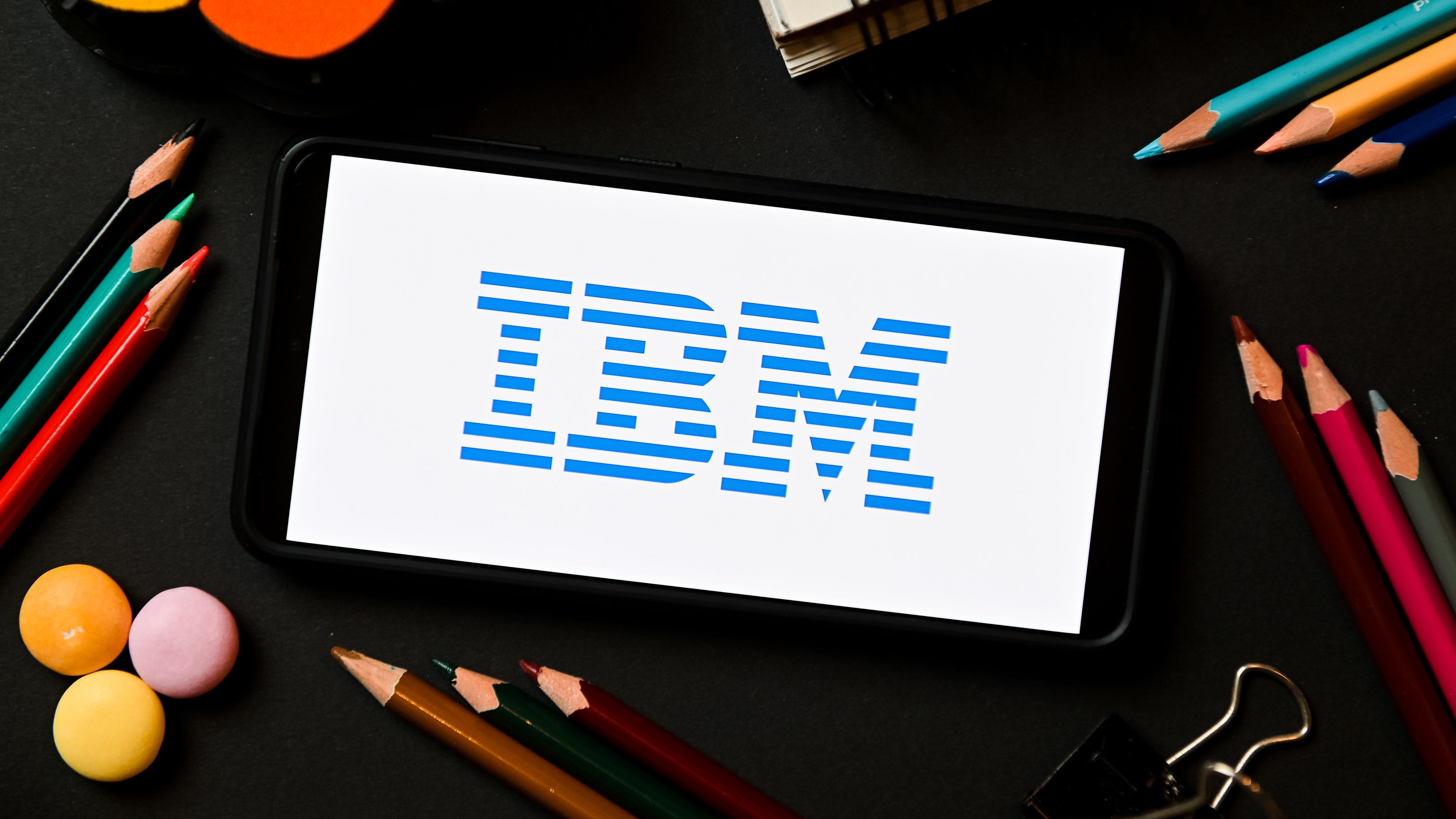How the channel ecosystem can tackle future tech shocks
The IT channel must be bold and responsive to an ever-changing, unpredictable technology environment


In the last two years, we've seen huge pressures on the channel to adapt to new technologies in order to face new risks, such as the COVID-19 pandemic, the energy crisis, and the economic downturn.
Businesses, including our partners, have already done a huge amount to remain strong amid these rapid changes and steep challenges. But how much more resilient can businesses and partners be?

Luc van Huystee is the vice president mobility for consumer electronics at TD SYNNEX. He is responsible for mobility, smart home, and mixed reality technologies in EMEA. Van Huystee has a wealth of knowledge in these sectors with over ten years of experience at TD SYNNEX.
The Technology Ecosystem Benchmark Report, conducted by TD SYNNEX, in partnership with Canalys, surveyed 300 mid-sized technology ecosystem partners across North and South America, Europe, and Asia Pacific to further understand how the technology ecosystem is responding to today’s challenges.
The study examined how partners are anticipating and meeting end-user technology expectations, effectively managing technology ecosystem business operations as well as engagement, enrichment, and enablement.
An overall theme of the survey was “expanding services, ecosystem engagement, and emerging technologies emphasize that business evolution unlocks potential for European partners”.
In accordance, nearly eight out of ten (79%) of those surveyed saw increased IT ecosystem engagement as an important growth strategy, which is a step in the right direction, especially as 2023 throws up economic and market challenges.
But partners are like other businesses and feel the pressure to adapt to new technologies despite their deep industry knowledge and experience. It's striking that two-thirds of those in the channel worry about relentless transformation and its impact on their business today and into the future.
Stay up to date with the latest Channel industry news and analysis with our twice-weekly newsletter
Partners need to ask themselves: what will they need to help the channel navigate the wave of new technology in the next three years? Also, what kind of business strategies must be adopted that aren't already?
Adapting is key for channel partners
As we go through a period of rapid digitalization, adjusting to change is essential, especially when these changes affect partners. There is a deep reservoir of pragmatism about the need to accept transformation.
The majority of partners are able to deal with digital transformation and rapid change now, but when we look three years into the future, that optimistic sentiment drastically drops by 26%.
Partners are most worried about adapting to external factors, which is understandable. We've just gone through a period of unexpected change and partners are unable to predict what tomorrow will bring, let alone the next three years.
The channel has, however, shown its resilience throughout the pandemic and has continued to seize opportunities to work with customers during that time. As employees were suddenly forced to work from home, the channel was able to work with businesses to supply much-needed technology to make this transition for employees easier.
With this in mind, partners can consider adapting their own ways of working. But, they don't need to do this alone. Our aforementioned finding about how partners are looking to join forces shows how they recognize how their future depends on collaboration as much as healthy competition.
What is critical to this success is one global platform that connects the IT ecosystem players, those from technology manufacturing, publishing, and distribution to value-added resellers (VARs), independent software vendors (ISVs), and managed service providers (MSPs), to name a few amongst a growing number of solution providers.
Jumping on the trends bandwagon
Channel partners must always be thinking about new trends and how these can grow and extend their business. Not only that, but the channel should also think about how they can create new revenue streams.
Two trends that should be top of mind are the metaverse and environmental, social, and corporate governance (ESG). On the face of it both present challenges to the sector but could offer real long-term opportunities for how partners grow their businesses.
RELATED RESOURCE

Three innovative technologies to address UPS challenges at the edge
Understandably, when mixed or extended reality is discussed, consumer applications, such as entertainment and gaming come to mind first. However, extended reality also plays a key role to increase opportunities for business and channel applications. This has called for organizations and the channel to rethink some of their strategies.
For businesses, extended reality can massively improve workplace collaboration as more employees are now working from home or in a hybrid fashion. This has driven trends and demand towards more efficient and reliable ways to better interact within a business.
According to our research, 17% of partners are planning to offer AR/VR solutions over the next 12 to 24 months.
The channel can be bold and leverage the opportunities extended reality brings. It provides a way for the channel to create a package of solutions which address all customer needs.
This could include training on how to use these solutions and how they can benefit businesses. As well as this, resellers can also use extended reality to showcase themselves and their expertise of these new technologies.
ESG is a key business consideration
The environment will always be a key priority for businesses and the channel must put down roots around how they can help their customers address issues of sustainability through how they use and consume technology.
According to the Technology Ecosystem Benchmark Report, nearly half of partners (43%) plan to offer sustainability reporting in the next 24 months.
One area where partners can demonstrate a pivotal role is in reducing e-waste. Based on current trends, the World Economic Forum has revealed that there will be approximately 67 million tonnes of global e-waste by 2030. Even more shocking, under one-fifth of e-waste is properly recycled worldwide.
The issue of e-waste then gets pushed to developing regions, which do not have the proper practices in place to deal with this.
Partners can consider focusing more of their efforts on tackling these issues, using the circular economy, which is a promising solution. There are already device recycling programmes in the channel, which give new life to tablets, laptops, mobile handsets, and other endpoint devices.
These programmes streamline the whole trade-in process, even if it's an entire fleet. Using these channel programmes, pre-used devices are collected and cleaned, all data is wiped, and certifications are then shared with customers.
Each unit is graded, with the majority being classed as grade C, with the device either resold or put onto a pallet to sell.
With all of the recent shocks in the wider market, affecting the channel and businesses, they have been forced to be resilient and power through. Businesses must think about how they can deal with changes to their own organization and focus on digitalization.
The channel must be bold and help their partners make their business more agile and responsive to unpredictable and changing economic situations.

-
 Gender diversity improvements could be the key to tackling the UK's AI skills shortage
Gender diversity improvements could be the key to tackling the UK's AI skills shortageNews Encouraging more women to pursue tech careers could plug huge gaps in the AI workforce
-
 Researchers claim Salt Typhoon masterminds learned their trade at Cisco Network Academy
Researchers claim Salt Typhoon masterminds learned their trade at Cisco Network AcademyNews The Salt Typhoon hacker group has targeted telecoms operators and US National Guard networks in recent years
-
 inforcer named as Microsoft partner for new AI-focused MSP initiative
inforcer named as Microsoft partner for new AI-focused MSP initiativeNews The vendor is one of just two software development partners selected for the initial phase of Microsoft’s #IntuneforMSPs initiative
-
 AI adoption is finally driving ROI for B2B teams in the UK and EU
AI adoption is finally driving ROI for B2B teams in the UK and EUNews Early AI adopters across the UK and EU are transforming their response processes, with many finding first-year ROI success
-
 AI-first partnerships: Unlocking scalable growth for business
AI-first partnerships: Unlocking scalable growth for businessIndustry Insights Channel partners play a vital role in facilitating AI adoption, but there's more to offering support than simple integration
-
 The crucial role the channel plays as AI transforms the contact center industry
The crucial role the channel plays as AI transforms the contact center industryIndustry Insights Channel partners can capitalize on the recent generative AI ‘boom’ to maximize impact - but there are key considerations at play
-
 8x8 unveils new partner ecosystem to advance AI experiences
8x8 unveils new partner ecosystem to advance AI experiencesNews The 8x8 Technology Partner Ecosystem will enable businesses to embed new AI-driven technologies into the 8x8 XCaaS platform
-
 SAP and Google Cloud unveil new open data offering
SAP and Google Cloud unveil new open data offeringNews The expanded partnership aims to help “break down barriers” between disparate systems and enable enterprises to view their entire data estates in real time
-
 Accenture bolsters industrial AI services with Flutura acquisition
Accenture bolsters industrial AI services with Flutura acquisitionNews Bangalore-based AI specialist will help “power industrial AI-led transformation” for Accenture’s global clients
-
 IBM replaces Partner World programme with new IBM Partner Plus
IBM replaces Partner World programme with new IBM Partner PlusNews The initiative introduces fresh incentives, Insider Access, and enhanced support to help partners win clients